
Training & Regulations
Heliguy's Guide to Global Drone Regulations
With drone policy becoming a global conversation, Heliguy have put together a snapshot of how different countries approach the regulation of unmanned aircraft. ... Read More
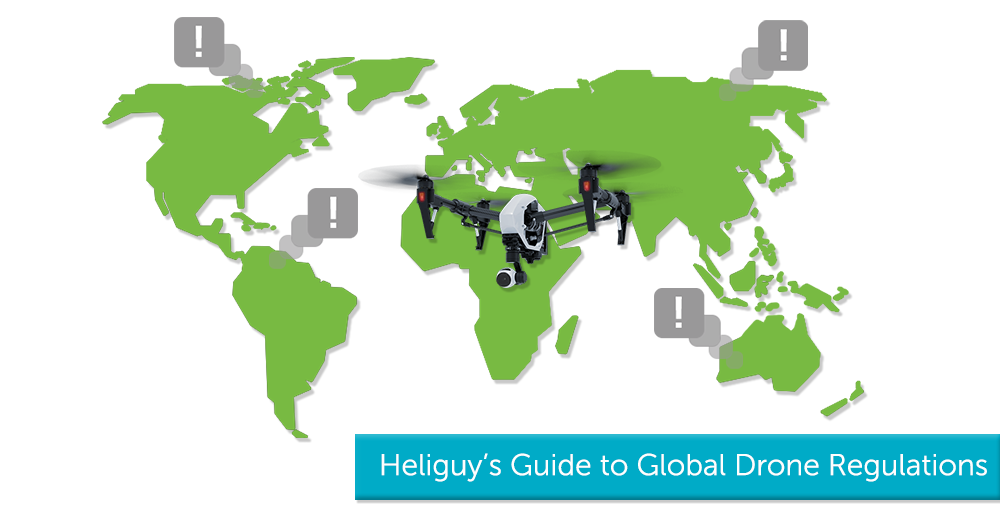
UPDATED 07/06/2017: Now featuring regulations from Ireland
Drones are becoming increasingly regulated across the world as both governmental and independent aviation authorities are waking up to the size of the growing demand. While currently there is little in the way of actual concrete laws governing the use of drones (although this won’t be the case for long), there are plenty of guidelines and enforceable restrictions it’s worth being aware of. Many drone users are beginning to take their aircraft abroad with them to capture some truly spectacular footage in exotic locations. While this is a great way to practice your aerial filmmaking and make your friends back home jealous, you must always be aware of the rules which are in place for each country. If you're using your drone professionally / commercially you may or may not need a drone license in the given area. With summer holiday season rapidly approaching, we’ve decided to focus on some of the most drone savvy countries on each continent to give you an idea of the state of legislation on a global scale. So without further ado, here’s Heliguy’s guide to how drones are regulated around the world as of 2016.
Use the following links to navigate this page:
Europe
EuropeImage.png As with the majority of technological advances, Europe has been quick to realise the potential of drones. While the severity of regulations differs from country to country, it’s safe to assume that as long as you’re aware of the legislation in place and ensure you follow the available guidelines, you shouldn’t run into too many problems.
UK

The Civil Aviation Authority (CAA)
When piloting a drone in the UK there are rules you need to be aware of to ensure your own safety and that of others. A collection of guidelines governing how to responsibly fly drones in the UK has been drawn up by the CAA. Known as the ‘Dronecode’, it states that UAVs must:
Be visible at all times
Remain below 400ft
Not be flown over congested areas
In addition, when a drone is fitted with a camera, they recommend that:
They should not be flown within 50m of people, vehicles or buildings
Pilots must also be mindful of privacy when taking pictures
Those using a drone to make money, e.g. for aerial photography, must get permission from the CAA and complete a training programme to demonstrate their competence with the craft
Currently, you must obtain CAA permission if any of the following criteria apply:
You intend to operate a drone which is 20-150kg
You are going to make money from using the drone
Commercial drone operators in the UK also need to observe Regulation EC785/2004 on Insurance Requirements for Air Carriers and Aircraft Operators. There is a risk of prosecution for those who fail to adhere to these rules, however – they aren’t set in stone. It’s possible to apply for PfCO (Permissions for Commercial Operation) which allow you to operate commercially and request exceptions to the guidelines be made for your flights. While the CAA don’t license people themselves, they approve other providers to do so for them. For more information about CAA approved courses, visit our drone training page to find out how you can get accredited through Heliguy.
Ireland
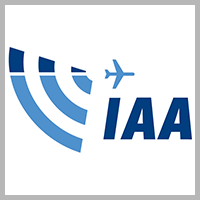
The Irish Aviation Authority (IAA)
Here are the drone regulations pertaining to their use in Ireland as stipulated by their aviation authority the IAA. Aside from the usual restrictions, it's also worth noting that there is a mandatory registration process, the criteria of which is explained below.
Drones weighing 1kg or more and less than 25 kg, without fuel but including any articles or equipment installed in or attached to the aircraft and including cargo at the start of its flight, must be registered
Unmanned aircraft of 25 kg or more, are subject to the Irish Aviation Authority (Nationality and Registration of Aircraft) Order, 2015, and must be registered in a similar manner to manned aircraft
The pilot must keep their drone within their line of sight
Drone flights are capped at 400ft upwards and 300ft outwards without additional permissions
No flights must take place within 30m of a person, vehicle or structure beyond the pilot's control
Never fly over densely populated areas (i.e. cities and towns) as well as large groups of people and events
You must have permission from the landowner before takeoff and landing
Keep out of restricted airspace and critical infrastructures such as power stations and military bases
Ensure you fly safely and never recklessly endanger people or property
The majority of these regulations will be familiar as they follow the model of the successful CAA Dronecode, however, it's interesting that Ireland has opted for regulation which is becoming more commonplace as drones enter the mainstream consciousness of consumers as well as larger businesses.
France
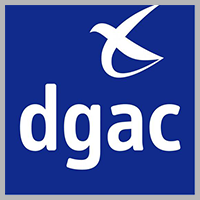
Directorate General for Civil Aviation (DGAC)
See below for the rules laid out by the French aviation authority which apply both to French citizens and anyone looking to visit the country with their drone.
Maintain a safe distance from people and vehicles and never fly over crowds
Keep the drone below 500ft at all times and retain your line of sight
Don’t fly unmanned aircraft near to airfields, ensure you are at least 5km away (15km for larger aerodromes)
No flying over ‘strategic sites’ such a power plants, national monuments or military bases without receiving prior permission
French regulations prohibit flying drones at night
Don’t use the drone’s camera to record people/vehicles without consent and never store or distribute footage without the subject’s explicit agreement
While the DGAC have implemented the above rules as well as classifications of aircraft which runs from A to G based on mass, the rules on commercial use are still in development. Aside from meeting safety criteria and displaying a valid business reason, there isn’t a lot stopping businesses operating drones in France.
Germany

Luftfahrt-Bundesamt (LBA)
The below restrictions apply to the operation of unmanned aircraft under the German Aviation Act:
Recreational drone users must apply for a permit if their craft weighs more than 5kg, drones weighing less than 5kg are subject to no specific aviation legal requirements
The drone must remain within visual range of the pilot, e.g. at a maximum distance of 200 – 300m. Some areas restrict the height of such flights to between 30 and 100m (it’s always best to check with local authorities before flying).
A minimum distance of 1.5km from aerodromes must be observed
Be wary that ‘no-fly zones’ are in effect within the government district in Berlin
Flying above military installations, power plants, industrial zones, accident scenes and large crowds require official permissions
There are separate regulations in place for those looking to operate as a commercial drone pilot in Germany:
Piloting commercial drones up to 5kg requires a flight permit from the local authority whilst unmanned drones weighing over 25kg are not permitted for use
The pre-requisites for obtaining a flight permit are proof of insurance (your best bet is a policy offered by model aircraft associations), proof of training and well the technical details concerning the drones to be used
For each drone over 5kg, individual permits are required
Italy

Ente Nazionale Per l'Aviazione Civile (ENAC)
The Italian aviation authority, ENAC, has been developing a series of strict rules concerning the governance of drones. See below to find out what to expect if you intend to capture some aerial shots of Italy.
The maximum flying height permitted is 230ft
Don’t fly your drone further than 490ft horizontally or out of visual line of sight
Never carry dangerous goods on your drone
You may not fly your drone over densely populated areas, crowds, beaches, national parks, railways, highways or industrial plants
Stay at least 8km away from aerodromes
You are only allowed to fly your drone during the day
Drones must weigh under 25kg to be permitted to fly
You must keep the craft 50m away from people or property not directly under your control
You must carry third party insurance
For any commercial activity, you must be granted permission from ENAC – especially if your intended use of drones contravenes one of the above guidelines.
Russia
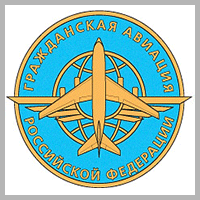
The Federal Air Transport Agency (FATA)
Russia has recently undergone a regulatory overhaul with regards to drones. Many are calling it similar to that the FAA carried out in the U.S. which went into effect in late August 2016. The main rules for drone users in Russia are:
You are required to register any drone with a weight of over 0.55lb with FATA
A pilot and an observer are necessary for every flight. This is to ensure that the flight is properly monitored
You must have the correct third party insurance cover in place before flying
A flight plan must be created and submitted to FATA prior to each flight. This plan must detail the model of the drone being used, your purpose for flying as well as both the planned time and location
Do not fly over people who aren't involved in the flight, especially large crowds
Respect the privacy of others when flying
It is prohibited to fly over military bases, power stations, or any locations that may cause issues for local authorities
You must fly during the day and only in appropriate weather conditions with good visibility
Don't operate your drone near airports, or in any close proximity to manned aircraft
It will be interesting to see what effect these regulation have on the Russian drone economy and how widely accepted commercial usage becomes, not to mention whether it is supported by the government and FATA.
Spain

Dirección General de Aviación Civil (DGAC)
Spain has been classified as one of the more strict countries when it comes to operating drones in their airspace. While we always recommend you contact each individual aviation authority to ensure you have all the information you need - here are the basics to get you started:
Aircraft up to 25 kg (55 pounds) fully loaded are permitted
A certificate of airworthiness is required
Flights must take place in clear conditions
No flying over congested areas or in controlled airspace
Within the visual range of the pilot, no further away than 500m and no higher than 400 feet
To operate professionally in Spain you need to be in possession of the following:
Certification for professional users i.e. a pilot license authorised by the EASA or the Spanish ATO.
A medical certificate
An up to date Operations Manual
Valid insurance
You must also be over 18 years old
Mostly in line with similar EASA governed areas, Spain has taken it upon itself to tighten up its regulations. This isn't a problem for responsible users, however, and will hopefully promote safer flying.
Sweden

Transport Styrelsen (TS)
Much has been said of Sweden's decision to clamp down on camera drones in their tightening legislation on surveillance. Aside from these, however, the regulations will be familiar to any regular drone user.
Flights must remain no more than 500m away from the operator or 400ft upwards
You must retain visual line of sight
Do not disturb others with your drone
Do not fly over congested areas
Do not fly in restricted airspace
You must receive permissions to fly a drone with a camera due to surveillance laws
Permissions must be requested for commercial work, research and aerial imagery
As their rules are still in a state of flux, it's highly recommended that you contact the aviation authority before your trip to ensure you're following the law to the letter.
Finland

Trafi aka Finnish Transport Safety Authority (FTSA)
There are a couple of interesting quirks to Finland's drone laws such as the stipulation that you must affix personal details to the aircraft but apart from this, the rules are fairly standard.
The Finnish Transport Safety Agency must be informed of: operator details, aircraft information, intended operational scope
Minimise risk to persons, property and to maintain low levels of noise
You have to be over 18 to pilot a drone
Attach your personal information to the aircraft
Never interfere with the work of emergency service responders
Flights must remain no more than 500m away from the operator or 400ft upwards
Don't fly in poor weather conditions
Never fly your drone higher than 50m near airports
If you intend to fly your drone in Finland, as the regulations suggest, it's best to inform FTSA of your intentions to avoid any unnecessary trouble from the authorities.
Back to Menu
Africa
AfricaImage.png Africa has seen some of the most interesting advances in terms of drone use cases over the past few months with trials including the delivery of medical supplies and essentials to rural communities starting to get off the ground. The severity of regulations differs across the continent, here are three examples of the approach Africans are taking towards legislation.
Kenya
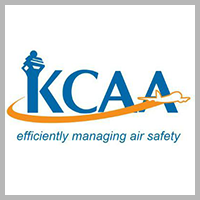
Kenya Civil Aviation Authority (KCAA)
The KCAA is in the process of implementing a system which will require the registration of all drones being used in Kenya. Their reasoning is that this will increase safety and accountability as unmanned aircraft become increasingly popular. The main rules for drone users in Kenya are:
Kenyan citizens above the age of 18 are eligible to fly drones
Drone pilots (whether commercial or recreational) must apply for ‘RPAS (Remotely Piloted Aircraft Systems) Operating Certificates’ which are issued by KCAA
You must have the correct third party insurance cover in place before flying
Drone operators are responsible for the safety and security of their business operations including the location, people and necessary equipment
Recreational use of drones is limited to a maximum height of 400ft above ground level whilst commercial usage is permitted at heights specified by the KCAA on a case by case basis
Flying at night or in poor visibility is prohibited
All incidents and accidents must be reported directly to the KCAA
No drone flights are permitted within 10km of any airfield except with the written permission of the owner and approval from the KCAA
Air traffic control must be made aware of any operations which are likely to affect manned aircraft.
The above regulations are taken immensely seriously by the KCAA and include the provision to impose fines and jail terms for anyone who violates the rules.
South Africa

South African Civil Aviation Authority (SACAA)
South Africa have two sets of guidelines referring to both recreational and commercial usage of unmanned aircraft. The first set refers to ‘Hobby Drone Users’:
No requirements to apply for an RPL (Remote Pilots Licence) or register the drone
Drones up to 7kg are fine to fly
Night flying is permitted
The maximum permissible flying height is of 400ft
Drone pilots can fly their craft to distances of 500m horizontally but must retain line of sight
Flights must take place at a distance of at least 50m from people, roads and structures
Any recreational drone activity must remain at least 10km from aerodromes
Be wary of no-fly zones such as power plants, national monuments, crime scenes and prisons
There are currently five licensing requirements to operate a drone commercially in South Africa. You must be in possession of:
A registered drone (on SACAA’s records)
A Remote Pilot Licence (only necessary for the pilot)
An Air Services Licence (from Department of Transport)
A Letter of Approval (for each drone to be used for commercial purposes)
A Remote Operator Certificate (this must include an approved Operations Manual)
These clearly defined guidelines are a great example of how to successfully regulate drones in a way that is fair to pilots but also restricts opportunities for reckless flying.
Zimbabwe
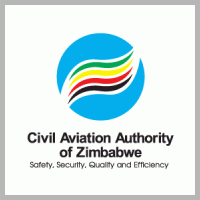
Civil Aviation Authority of Zimbabwe (CAAZ)
May 2016 saw the release of a new set of guidelines concerning drone usage in Zimbabwe. Below are the main points from the CAAZ’s drone regulations:
Before piloting a drone, you must have a valid, CAAZ-issued license
Drones must be in good working order before flights
Strictly no night flying or flights when weather conditions are poor
The drone must remain in the pilot’s line of sight
Never take off from a road, fly along a road, or fly within 30m of a road
Never fly drones in controlled airspaces
Pilots must not deliver or drop items from drones or carry dangerous goods
No drugs or alcohol are to be consumed within 8 hours of flying a drone, or while flying it
Pilots mustn’t fly multiple drones in a formation or perform tricks in the air
The maximum flying height is capped at 400ft above ground level and flight must take place at least 5.5km away from an aerodrome
No-fly-zones are in effect over prisons, police stations, law courts and strategic installations
Never fly a drone above or within 30m of people or buildings unless you have permission
Back to Menu
Asia
AsiaImage.png Globally recognised as leaders in drone manufacture (most notably in China), there’s a great deal of familiarity with unmanned aircraft in the region. With countries such as Japan frequently held up as advanced tech hubs and the growing wealth of nations such as Singapore, there’s plenty of demand for the latest gadgets and more specifically, drones.
Japan

Japan Civil Aviation Bureau (JCAB)
Japan has embraced drone technology but also seeks to strictly regulate its use. Talks are underway to expand their existing restrictions but here are the main points as they currently stand:
The maximum flying height is 492ft from ground level
Drone flights must be carried out at least 9km away from aerodromes
It is not permitted to fly drones overcrowded areas or live power lines
Drones are prohibited from flying over any roads
Flying over any property without the owner’s consent isn’t permitted
Drones must be flown during the day
Transporting or dropping goods from drones is prohibited
Osaka and Tokyo have banned drone use in all parks within the city limits
No-fly-zones are in effect over the Prime Minister’s office, the Imperial Palace, all aerodromes and facilities such as power plants
If these restrictions aren’t adhered to, the offending drone pilot is liable to receive a fine of up to 500,000 yen. However, the above rules are not applied to drones undertaking search and rescue operations or aiding in the case of accidents and disasters.
Singapore

Civil Aviation Authority of Singapore (KOCA)
Here are the regulations currently in effect for drone pilots in Singapore:
Pilots must retain visual line of sight
Flights must take place in favourable weather conditions with good visibility
The maximum flying height is capped at 200ft
Drones mustn’t be operated within 5km of aerodromes
When flying, a “sufficient distance” must be kept between the drone and any people or buildings, especially in congested urban areas
If you’re looking to use commercially in Singapore be aware that you require an Operator Permit from the CAAS as well as an Activity Permit which outlines your intended task and the equipment you will be using.
China
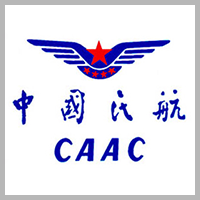
Civil Aviation Administration of China (CAAC)
Since the beginning of 2016, China has rapidly implemented restrictions (after an admittedly slow start) on the use of drones. The home of such manufacturing titans as DJI and Yuneec has begun to identify the potential of the consumer drone market and also the hazards of leaving their skies unregulated.
All drones under 7kg are permitted to be flown in China
If a craft weighs 7 - 116kg a license from CAAC is required
Any drone weighing over 116kg requires a pilot’s license and UAV certification for operation
Drone flights in controlled areas require approval in advance
Approval from CAAC is needed for all commercial drone flights
Avoid flying near aerodromes and flight paths and exercise caution when flying over built up areas or over people
Surprisingly, China’s approach is less restrictive than some other countries – most probably due to the fact that, as previously mentioned, they are currently the world leaders in consumer drone manufacture.
Back to Menu
The Americas
AmericasImage.png One of the most advanced regions in the world, The Americas (most notably North America) are often held up as leaders in, amongst other areas, technology. So it should no surprise that drones have taken off across the Atlantic, from Canada all the way down to Brazil, the uptake has been swift and it shows no signs of slowing.
USA

The Federal Aviation Administration (FAA)
Despite the USA’s reputation as a centre for innovation, there are still issues present with the way that drones are regulated. The FAA has recently released Part 107 aimed at clarifying their position on the recreational usage of drones. Below are the concrete restrictions that apply to hobbyist usage:
Drones weighing up to 55lbs are permitted for recreational use
Any drone weighing more than 0.55lbs must be registered with the FAA
Maximum flight elevation of 400ft above ground level
Pilots must be aged 16 or above
Minimum weather visibility of three miles from control station
Unmanned craft must remain in the pilot’s line of sight
Drones must yield right of way to all other aircraft
Drones are not allowed within 9km of aerodromes without permission
Washington has been established as a no-fly-zone and other state authorities are free to establish their own no-drone zones
If you want to operate commercially in the USA, you need to apply to the FAA for a Section 333 Exemption which allows regulated commercial activity such as aerial photography to be carried out by drone pilots. See below for the FAA’s explanation of this exemption: “The Section 333 Exemption process provides operators who wish to pursue safe and legal entry into the NAS a competitive advantage in the UAS marketplace, thus discouraging illegal operations and improving safety.”
Canada
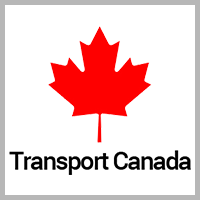
Transport Canada (TC)
Canada has taken increased steps towards regulation recently due to the interference of irresponsible drone users around forest fires. That being said, they are mostly common sense policies which aren’t overly restrictive to drone pilots:
Drones must be flown during the day and in good weather conditions
Visual line of sight must be maintained
Pilots must avoid flying over private property where possible
Flights must take place 9km from aerodromes
Maximum altitude is capped at 300ft above ground level
Keep a distance of 500ft from people, animals, structures, roads or vehicles
Pilots mustn’t fly over large crowds
Don’t enter restricted and controlled airspace e.g. military bases, prisons or forest fires
That covers the rules for recreational users, however, if the craft weighs more than 35kg or you intend to operate commercially, you require a Special Flight Operations Certificate (SFOC).
Brazil

Agência Nacional de Aviação Civil (ANAC)
With the Rio Olympics drawing near, Brazil is following in the footsteps of London during Obama’s visit and France’s tightened restrictions around UEFA by preventing drones from flying in public spaces without special permissions. If you were to visit any other time, however, here are the restrictions to be aware of:
Visual line of sight must be maintained
The maximum flying height is capped at 400ft above ground level unless you’re in a congested urban area when it reduced to 200ft
A license is required if you want to fly above the 400ft limit
The minimum age to operate an unmanned vehicle is 18
Ensure the craft is 30m from people, buildings and crowds unless consent is given
Pilots must ensure they have valid insurance
There is currently no mandatory registration for drone pilots in Brazil and although they have taken steps to implement regulations for drone use, there’s still a pretty lax attitude towards unmanned aircraft.
Back to Menu
Oceania
OceaniaImage.png One of the most proactive continents when it comes to drone regulation, Oceania has seen legislation passed as early as 2002. With countries such as Australia and New Zealand drawing in massive amounts of tourism based on their spectacular scenery, it’s no surprise that they’re popular settings for aerial footage.
Australia
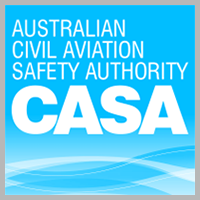
Civil Aviation Safety Authority (CASA)
Having been one of the earliest countries to implement sensible drone regulations, Australia’s guidelines are some of the most straightforward you’ll find, which is a good thing for such a popular tourist destination. Here are the restrictions which apply to recreational drone flights:
Aircraft must remain below 400ft
Pilots must ensure they stay within uncontrolled airspace
Flights must take place at least 5.5km from an aerodrome
Unmanned aircraft must remain 30m people not involved with the flight
Drones are prohibited in populous areas
Visual line of sight must be maintained
Any commercial flights require that both the pilot and the business which is conducting the operation are certified. The pilot must have a ‘UAV Controller’s Certificate’ and the business must be in possession of a ‘UAV Operator’s Certificate’.
New Zealand
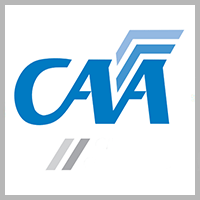
Civil Aviation Authority of New Zealand (NZCAA)
New Zealand is an immensely popular tourist destination so it's no surprise that people would flock there to get some stellar drone footage. In response to the rise in drone usage, the NZCAA have implemented the following '12 Key Rules':
Do not operate an aircraft 25kg or larger and always check that it's safe to fly prior to use
Make every possible effort to minimise danger to people, property, and other aircraft
You may only operate your unmanned aircraft in daylight
It is essential that drone pilots give way to manned aircraft
You must be able to see the drone with your own eyes without the aid of binoculars etc. to ensure a safe distance from other aircraft (in certain cases it is permissible to use an observer)
Pilots should display knowledge of any airspace restrictions which currently apply in their desired flight location
No flights are to take place within 4km of any aerodrome (unless exemptions are granted)
Never exceed 400ft above ground level (unless exemptions are granted)
If you're operating controlled airspace, you must obtain air traffic control clearance
Do not fly in special use airspace (e.g. military bases, power plants) without the permission of the necessary authority
You must receive consent from anyone you intend to fly above
The consent of the property owner is required you are wanting to fly above private land.
Back to Menu
Summary
It’s clear that regulations are stepping up to meet the rapid advances in the global drone market. Countries across the world are independently implementing restrictions (some more restrictive than others), attempting to find the right balance between supporting the progress made possible by drones but also ensure that irresponsible users face the appropriate legal action. However, if you’re a competent drone pilot, do your research thoroughly and contact local authorities before embarking on an aerial shoot abroad, it’s unlikely that you’re going to run into too many problems. Please Note: The guidelines featured in this article aren’t exhaustive and Heliguy recommends that you always check with each individual country’s aviation authority before conducting any drone activity whether commercial or recreational.
Training with Heliguy
DroneRegsHeliguyCAA.png As well as supplying a wide range of drones from both DJI and Freefly, Heliguy is dedicated to being a one-stop-shop for all of your drone needs. With years of experience in selling, repairing, building and training pilots, we are in the position to offer our trainees an unparalleled experience. We will guide and support you through every step on your pathway to commercial permissions from the first day of ground school to passing your practical flight test. Our CAA approved training ensures that you’re fully accredited to perform commercial work with your drone. To find out more about what we have to offer, visit our training site or contact our team at 0191 296 1024 or email info@heliguy.com Keep checking back to Heliguy Insider for more insights into the increasing regulation of unmanned aircraft and, of course, the latest news from the drone industry.
Back to Menu
